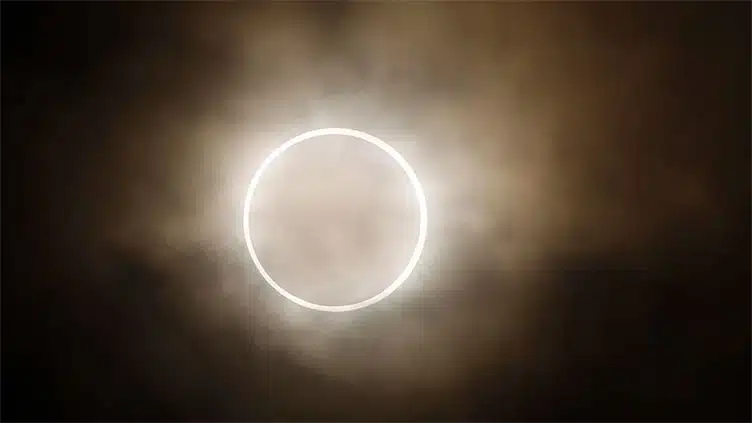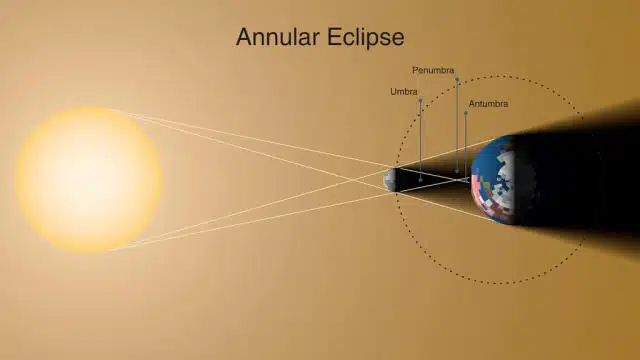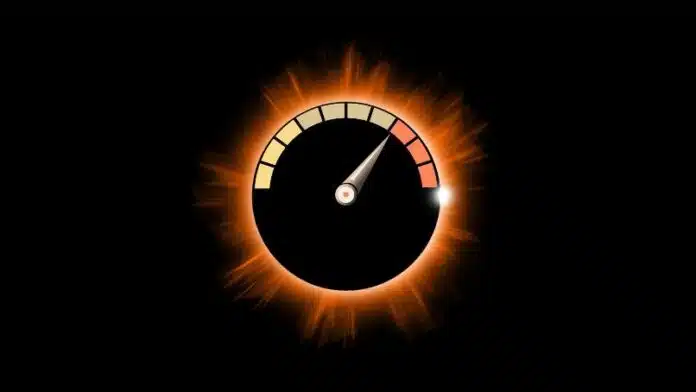On October 14, 2023, there will be an annular solar eclipse known as the ‘Ring of Fire’ that will traverse the Americas.
During this event, a portion of the moon’s shadow will move at over 5,500 mph, which is more than twice the speed of a bolt of lightning. Moreover, it can go as slowly as 1,250 mph, which is roughly the same as a jet fighter.
It is conditional on the location on Earth where the eclipse is taking place. According to Dan McGlaun, an eclipse calculator and cartographer whose website Eclipse2024.org simulates exactly what observers will see during the annular solar eclipse, “how fast the eclipse travels depends on the geometry—where on Earth the shadow is traveling, as well as the distance to the moon and the moon’s orbital speed.”
Where will the eclipse go most slowly?

The eclipse will move at a rather slow velocity of just 1,251 mph near the center of the route, where a “ring of fire” will emerge for 5 minutes and 17 seconds off the coast of Nicaragua. According to McGlaun, “the axis is basically perpendicular to the surface in the middle of the path.” The crossing of the Earth’s and the moon’s shadows causes a slowdown, although the moon itself doesn’t.
How quickly will the eclipse cross the United States?
During this eclipse, the speed of the shadow will not be faster or slower in any part of the United States. The moon’s shadow will be traveling at a far more leisurely 5,683 mph when it hits the Oregon coast at 9:13 a.m. PDT. It will have dropped to 1,772 mph by the time it leaves the Texas coast at 12:03 p.m. CDT, barely 50 minutes later. As a result, it will slow by 3,911 mph when it travels past the southeastern United States.
Where will the path of totality be quickest?

The spherical shape of the Earth significantly affects the eclipse’s pace. According to Xavier Jubier’s dynamic eclipse map, the moon’s antumbral shadow (within which the “ring of fire” would be seen) will travel at a staggering 198,842 mph when it first impacts the northern Pacific Ocean. At 582,976 mph, it will leave Earth in the Atlantic Ocean 219 minutes later. Since the shadow’s axis is most tangent to Earth’s surface at the path’s ends, “the shadow always moves fastest at those locations,” said McGlaun.
How do lunar shadows work?

A total solar eclipse occurs when the moon passes directly between the Earth and the sun. On October 14, however, the moon won’t be so much smaller than the Earth that it will throw a little shadow over the Earth’s surface (the path of totality). Its orbit will take it a little farther away from the sun on that day, so it won’t obscure it entirely. While it will generate a temporary “ring of fire,” visible from a 125-mile broad route through eight U.S. states, the path itself will be directly in the middle of the inferno.
The cone-shaped umbra at the center of the moon is its primary shadow. The point of that cone really makes contact with the planet during a complete solar eclipse. This cone, however, does not reach Earth at all during an annular solar eclipse. As a result, the moon seems to be entirely inside the sun’s disk, a phenomenon known as an antumbra.


